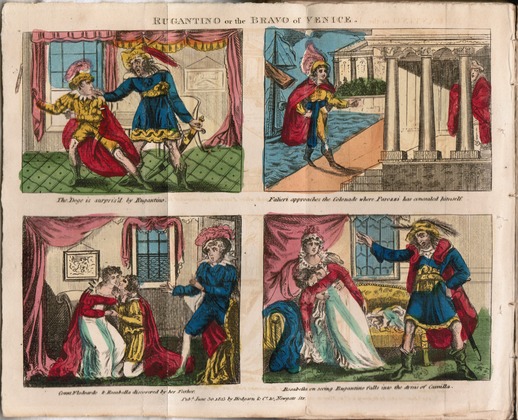Narrative
Gothic Chapbooks
7. Although it is often associated more closely with the novel in this period, the gothic also permeated theatrical works, poems, and other sensationalist genres. “Rugantino, The Bravo of Venice” is an adaptation of M. G. Lewis’s two-act melodrama, which in turn was based on his own translation of a 1784 German prose narrative by Zchokke. Whether Lewis himself wrote the narrative for this chapbook version is difficult to say; certainly, the inclusion of his name on the chapbook cover suggests that he was well known even by the lower classes, which did not have the same kind of access to literature as the higher classes. Lewis’s career as a novelist and playwright demonstrates how the gothic pervaded many literary genres in the Romantic period. Best known for the gothic novel The Monk (1796), he also wrote a number of gothic melodramas that were performed at the Drury Lane and Covent Garden theatres.
“Rugantino, the Bravo of Venice,” by M. G. Lewis, was published and printed by Hodgson & Co, Newgate Street, London. Price sixpence. It includes a fold-out page of colour illustrations depicting various scenes in the story. This artifact is part of a collection of chapbooks bound together under the title Brochures Diverses.
















